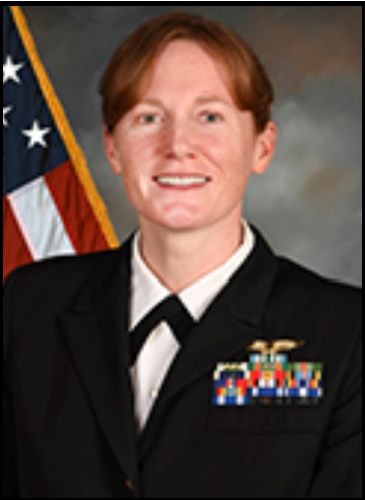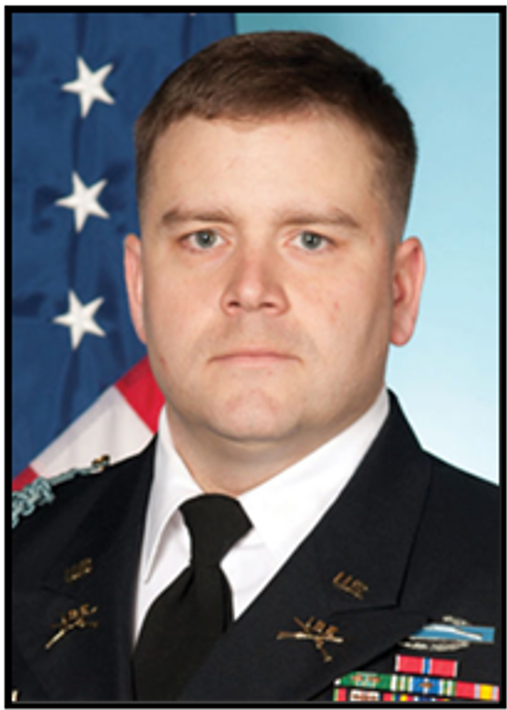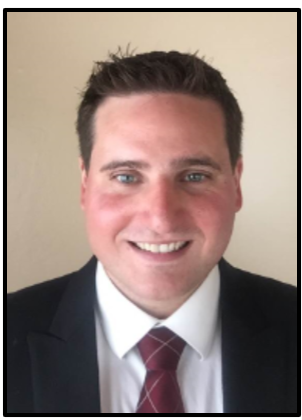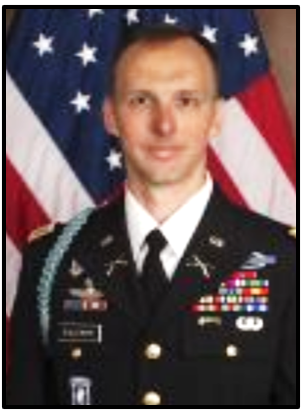Dissertations - Systems Engineering Department
Systems Engineering Student Dissertations
All Dissertations can be found at the Dudley Knox Library Website on the Calhoun webpage.
Calhoun is the Naval Postgraduate School's digital repository for research materials and institutional publications created by the NPS community. Materials in Calhoun are openly accessible to anyone on the web, and will be preserved for future generations












USEFUL MEASURES OF COMPLEXITY: A MODEL OF ASSESSING DEGREE OF COMPLEXITY IN ENGINEERED SYSTEMS AND COMPLEX PROJECTS
Abstract: Many modern systems are very complex, a reality which can affect their safety and reliability of operations. Systems engineers need new ways to measure problem complexity. This research lays the groundwork for measuring the complexity of systems engineering (SE) projects. This research proposes a project complexity measurement model (PCMM) and associated methods to measure complexity. To develop the PCMM, we analyze four major types of complexity (structural complexity, temporal complexity, organizational complexity, and technological complexity) and define a set of complexity metrics. Through a survey of engineering projects, we also develop project profiles for three types of software projects typically used in the U.S. Navy to provide empirical evidence for the PCMM. The results of our work on these projects show that as a project increases in complexity, the more difficult and expensive it is for a project to meet all requirements and schedules because of changing interactions and dynamics among the project participants and stakeholders. The three projects reveal reduction of project complexity by setting a priority and a baseline in requirements and project scope, concentrating on the expected deliverable, strengthening familiarity of the systems engineering process, eliminating redundant processes, and clarifying organizational roles and decision-making processes to best serve the project teams while also streamlining on business processes and information systems.
Read the full dissertation at https://calhoun.nps.edu/handle/10945/68753
Author
Cuong Ton (Graduated March 27, 2021)
Advisors/Committee
Wei Kang (Member), Robert Harney (Supervisor), Clifford Whitcomb (Member), Ronald Giachetti (Supervisor - CHAIR), Douglas Van Bossuyt (Member), Robert Semmens (Member)
RESILIENCE ASSESSMENT OF ISLANDED RENEWABLE ENERGY MICROGRIDS
Abstract: The military’s installations on remote islands have the highest power costs and demand resilient and reliable power for mission assurance. These installations have no electrical connection to an external utility provider and encounter numerous challenges in incorporating renewable energy, and there is a pronounced gap in both defining resilience and measuring it for off-grid islanded microgrids at islanded naval installations (INIs). This work’s research objective was to develop a methodology to choose renewable energy microgrid designs that maximize resilience and minimize costs on remote islands with applications for INIs. The deliverable is a tool that incorporates the methodology to identify the cost of resilience using a measure that captures the area under the resilience curve. The tool uses the models developed in this research to create the resilience and cost trade-off curves for different microgrid design and maintenance options to enable decision makers to choose an optimal microgrid design primarily for remote islanded military installations like San Nicolas Island. The research concluded that resilience can be improved by using optimal power capacity ratios for a renewable energy microgrids, that redundancy improves resilience for less costs, and that more maintenance only improves resilience when the generation capacity is closer to the demand and for microgrids with less redundancy.
Read the full dissertation at https://calhoun.nps.edu/handle/10945/66574
Author
William W. Anderson (Graduated December 18, 2020)
Advisors/Committee
Giovanna Oriti (Member), Fotis Papoulias (Member), Ronald Giachetti (Supervisor - CHAIR), Douglas Van Bossuyt (Member), Richard Carlin (Non-NPS Member)
IDENTIFICATION OF BEHAVIOR PATTERNS IN SYSTEMS-OF-SYSTEMS ARCHITECTURES
Abstract: This dissertation presents a methodology to derive inherent behavior patterns in system-of-systems architectures. When considering the possibility of not only the intended behaviors of a system but also the alternative, unintended behaviors of the system, the developer needs to evaluate hundreds of possible outcomes, even for a simple model. This set of outcomes grows to tens of thousands for a reasonably complex model, driving the need for some means of systematic analysis that ensures the evaluation of all possibilities. This dissertation outlines a methodology that enables the developer to describe the behaviors of a particular system; define the interaction of the system with other systems, users, and the environment; add constraints to the model; derive patterns from the set of possible outcomes; analyze and interpret the results; and re-use the model for other problems of interest. The methodology employs the Monterey Phoenix behavior modeling concepts and tools as a light-weight, formal method. The dissertation details a cross-domain example that demonstrates the methodology and outlines multiple applications, serving as verification of the approach.
Read the full dissertation at https://calhoun.nps.edu/handle/10945/64902
Author
John J. Quartuccio (Graduated March 27, 2020)
Advisors/Committee
Mikhail Auguston (Member), Clifford Whitcomb (Member), Kristin Giammarco (Supervisor - CHAIR), Raymond Madachy (Member), Ronald Giachetti (Member)
A FRAMEWORK FOR ENGINEERED COMPLEX ADAPTIVE SYSTEMS OF SYSTEMS
Abstract: This dissertation presents a theory for complex adaptive systems of systems (CASoS) as a new class of systems that can be engineered as solutions to highly complex problems. The exponential growth in technology, demands from a warfighting community to rapidly address operational challenges, and dynamic, highly complex environments overwhelm traditional engineering approaches. This study followed a grounded theory methodology. Thorough examination of systems and complexity theory knowledge domains and engineering disciplines resulted in a conceptual CASoS theory. The theory establishes the definition, characteristics, and principles of this new class of systems. Implications for this new class of systems identify unique capability requirements that are the bases for developing an engineering solution: 1) CASoS adjust to their environment through complex interactions among their self-organizing constituent systems, giving rise to purposeful emergent multi-level and multi-minded behavior, and 2) CASoS require an adaptive architecture that enables intelligent constituent systems with the ability to discover knowledge and predict the outcomes and effects of their actions. The CASoS systems engineering approach is a top-down and adaptive process that relies on continuous and ongoing design and development in parallel with operations. In defining a new systems domain, this research offers a framework to develop an engineered CASoS solution to highly complex problems.
Read the full dissertation at https://calhoun.nps.edu/handle/10945/63463
Author
Bonnie W. Johnson (Graduated September 27, 2019)
Advisors/Committee
Wayne Porter (Member), Alejandro Hernandez (Supervisor - CHAIR), Clifford Whitcomb (Member), Anthony Pollman (Member), Karen Holness (Member)
A SET-BASED APPROACH TO SYSTEMS DESIGN
Abstract: A set-based design (SBD) approach is proposed as an alternative to traditional point-based design (PBD) methodologies. SBD is compared to other common engineering, decision-making, and optimization methods to illustrate how conventional methods do not ordinarily embrace set-based thinking (SBT) or SBD methodologies. The predominant features of Toyota's approach are summarized, leading to seven characteristics and two principles required to identify a design approach as set-based. Several Latin hypercube (LHC) sampling strategies and the distinguishing characteristics of each are described for use in creating and refining sets. Methods of set reduction and elimination are introduced, and topics related to engineering reasoning in set reduction, expectations, SBT, when to use SBD, benefits, challenges, and metrics are discussed. Improved SBD process steps are proposed and demonstrated in an unmanned air system (UAS) example. A specific type of LHC is chosen to generate points in the design space, which are then used as inputs into a simulation tool. Approaching the UAS example problem in a set-based way results in more viable options with higher system-level performance for comparable cost than if a PBD approach were used.
Read the full dissertation at https://calhoun.nps.edu/handle/10945/62256
Author
Jamie M. Gumina (Graduated March 29, 2019)
Advisors/Committee
Rudolph Darken (Member), Alejandro Hernandez (Member), Eugene Paulo (Member), Clifford Whitcomb (Supervisor), Paul Beery (Member)
OPERATIONAL MISSION ARCHITECTURE FRAMEWORK: A BLENDED ARCHITECTURE METHODOLOGY FOR ENABLING OPERATIONAL CAPABILITY
Abstract: When called upon, the Department of Defense (DoD) typically organizes and integrates mission capabilities from across the enterprise, operates as a joint force, disassembles when the mission is complete, and prepares for the next potential mission. This dissertation presents an organizing construct and associative mapping tool that enables the systems engineering of this episodic joint operational mission capability. The Operational Mission Architecture Framework (OMAF) organizes the key elements of joint operational capability into an intuitive framework, orienting systems engineers to this critical perspective. With operational mission capability now in architecture form, enterprise architecture methodologies can then be applied directly to operational missions. The Operational Blended Architecture Map (OBAM) serves as the integrating mechanism. This blended approach allows the operational community to communicate in its own terminology with systems engineers, who, in turn, can execute enterprise-architecting activities in their own terminology, facilitated by this associative mapping matrix. OMAF/OBAM enables the desired top-down systems engineering effort for joint operational capability and Systems of Systems development. The cumulative effect of OMAF/OBAM provides the integrating function for a DoD capability development enterprise architecture. Without an enterprise approach, the DoD will continue to be challenged to deliver 21st century joint warfighting capability.
Read the full dissertation at https://calhoun.nps.edu/handle/10945/60413
Author
Thomas Irwin (Graduated September 21, 2018)
Advisors/Committee
Wayne Porter (Member), Eugene Paulo (Supervisor - CHAIR), Paul Beery (Member), Anthony Pollman (Member), Steve Gillespie (Non-NPS Member)
AGENT AND COMPONENT OBJECT FRAMEWORK FOR CONCEPT DESIGN MODELING OF MOBILE CYBER-PHYSICAL SYSTEMS
Abstract: Military intelligent ground vehicle systems (MIGVS) have a wide variation in computationally controlled behavior logic that involves the interaction of both cyber and physical components as well as more typical systems engineering modeling needs and constraints. Current system concept design methods do not sufficiently address either the variation in cyber behavior linked to mission effectiveness or the integrated dependencies and interaction between the cyber and physical components. In this work, model-based concepts are developed to capture the required behavior logic as solution and assembly independent state-based agents and objects. These logical objects can be realized by alternative implementations and assembly aggregations, to include “human assemblies.” The approach contributes a more thorough and robust model of the subject problem domain. These concepts include an agent and component object system data metamodel, supporting structural system classes, and state-based behavior concepts. The concepts are applied to a case study project to produce a solution-independent system concept design.
Read the full dissertation at https://calhoun.nps.edu/handle/10945/58286
Author
Curtis Adams (Graduated March 30, 2018)
Advisors/Committee
Marcus Stefanou (Member), Raymond Madachy (Member), Ronald Giachetti (Supervisor - CHAIR), Bryan O'Halloran (Member), John Reed (Non-NPS Member)
MISSION-BASED ARCHITECTURE FOR SWARM COMPOSABILITY (MASC)
Abstract: This research introduces the Mission-based Architecture for Swarm Composability (MASC) and methodology. This dissertation applies a mission engineering approach with model based systems engineering foundations to formalize a swarm architecture, which is an example of a complex adaptive system. This architectural framework and methodology extend current swarm system design methods, which are primarily bottom-up approaches focused on the behavior of individual agents. MASC introduces a top-down, hierarchical approach with an overarching mission decomposed into phases, tactics, plays, and algorithms. MASC is applied to three unmanned aerial vehicle swarm case studies and assessed for incorporating mission doctrine, enhancing architecture reusability, and improving user accessibility. The assessment of these three factors indicates that MASC improves the state-of-the art methods in complex adaptive system architecture design.
Read the full dissertation at https://calhoun.nps.edu/handle/10945/58300
Author
CDR Kathleen Giles (Graduated March 30, 2018)
Advisors/Committee
Eugene Paulo (Member), Kristin Giammarco (Supervisor - CHAIR), Timothy Chung (Member), Ronald Giachetti (Member), Raymond Buettner (Member)
METHODOLOGY FOR THE SYSTEMS INTEGRATION OF ADAPTIVE RESILIENCE IN ARMOR
Abstract: This dissertation introduces a novel augmentation to system-engineering methodology based on the integration of adaptive capacity, which produces enhanced resilience in technological systems that operate in complex operating environments. The implementation of this methodology enhances system resistance to top-level function failure or accelerates the system's functional recovery in the event of a top-level function failure due to functional requirement shift, evolutions or perturbations. Specifically, the dissertation defines and proposes a methodology to integrate adaptive resilience and demonstrates its implementation in a relevant armor system case study. The conceptual validity of the methodology is proven through a physical comparative test and evaluation of the system described in the case study. The research and resulting methodology supplements and enhances traditional system-engineering processes by offering systems designers the opportunity to integrate adaptive capacity into systems, enhancing their resilient resistance or recovery to top-level function failure in complex operating environments. The research expands traditional and contemporary systems engineering, design, and integration methodologies, which currently do not explicitly address system adaptation and resilience. The methodology accomplishes this objective by defining adaptive design considerations, identifying controllable adaptive performance factors, characterizing adaptive performance factors and configurations, mapping and integrating adaptive components, and verifying and validating the adaptive components and configurations that achieve system requirements and adaptive design considerations. The utility of this research and methodology is demonstrated through development of an adaptive resilient armor system called the mechanically adaptive armor linkage (MAAL), which was designed, developed, and validated using the methodology for the system integration of adaptive resilience (MSIAR).
Read the full dissertation at https://calhoun.nps.edu/handle/10945/50515
Author
LTC Joseph Cannon (Graduated September 23, 2016)
Advisors/Committee
Claudia Luhrs (Member), Robert Harney (Member), Douglas Nelson (Member), Eugene Paulo (Supervisor - CHAIR), John Reed (Non-NPS Member)
A MODEL-BASED SYSTEMS ENGINEERING METHODOLOGY FOR EMPLOYING ARCHITECTURE IN SYSTEMS ANALYSIS: DEVELOPING SIMULATION MODELS USING SYSTEMS MODELING LANGUAGE PRODUCTS TO LINK ARCHITECTURE AND ANALYSIS
Abstract: This dissertation contributes to model-based systems engineering (MBSE) by formally defining an MBSE methodology for employing architecture in system analysis (MEASA) that presents a comprehensive framework detailing the relationship between system architecture products and external models and simulations used to analyze system performance and feasibility. Specifically, the research combines the use of Systems Modeling Language (SysML) products and operational simulation models to support assessment of system requirements for systems engineering. The MBSE MEASA transforms operational needs into preferred system configurations through the analysis of detailed simulation models. The research does this by using designed experiments to generate architecture tradespace visualizations that highlight the impact that system design parameters, system-environment interactions, system operational implementation, and system component interactions have on system performance. The research demonstrates a procedure for iterations of the methodology when analysis suggests potentially impactful design, operational, or environmental variables (as well as potential interactions between those variables). The research develops and analyzes notional architecture products and simulation models of United States Navy mine warfare systems to demonstrate an application of the MBSE MEASA.
Read the full dissertation at https://calhoun.nps.edu/handle/10945/49363
Author
Paul Beery (Graduated June 17, 2016)
Advisors/Committee
Rudolph Darken (Member), Matthew Boensel (Member), Douglas Nelson (Member), Eugene Paulo (Supervisor - CHAIR), Kristin Giammarco (Member)
THE SYSTEM OF SYSTEMS ARCHITECTURE FEASIBILITY ASSESSMENT MODEL
Abstract: This research presents the system of systems (SoS) tradespace definition methodology (SoS-TDM) and SoS architecture feasibility assessment model (SoS-AFAM). Together, these extend current model-based systems engineering (MBSE) and SoS engineering (SoSE) methodologies. In particular, they extend the methods of tradespace exploration to considerations of multiple perspectives of an SoS—the physical, process, and organization. In considering multiple perspectives of an SoS, one better defines the SoS and is more likely to correctly represent its performance in an analysis model. The SoS-TDM defines an SoS tradespace by progressively winnowing the design space with increasingly strict definitions of feasibility and then exhaustively analyzing the remaining points. The SoS-AFAM defines and assesses SoS architecture feasibility through a variety of tests that consider the aforementioned aspects of an SoS. Together, these methods may be integrated with existing MBSE and SoSE methodologies and extend their utility.
Read the full dissertation at https://calhoun.nps.edu/handle/10945/49467
Author
CPT Stephen Gillespie (Graduated June 17, 2016)
Advisors/Committee
Rudolph Darken (Member), Alejandro Hernandez (Member), Eugene Paulo (Supervisor - CHAIR), Paul Beery (Member), Ronald Giachetti (Member)
UN-BUILDING BLOCKS: DEVELOPING A MODEL OF REVERSE ENGINEERING AND SEARCHING FOR APPLICABLE HEURISTICS
Abstract: Reverse engineering is the problem-solving activity that ensues when one takes a human-made system, whole or in part, and attempts—through systematic analysis of its physical characteristics and other available evidence—to answer one or more of the following questions: What is this for? What does it do? How does it do it? What is inside it? How was it made? A model developed from a synthesis of the technical literature is used to infer modes of failure in the process of reverse engineering and identify and catalog applicable experience-based techniques known as heuristics. The model is then cast in an executable formal language in order to further test its assumptions, and explore its implications. Hands-on, historic, and virtual case studies are used to validate and refine the model. The modes of failure, heuristics, and the model itself in its original and formal language expressions, introduce a new descriptive terminology of reverse engineering and provide a new framework to interpret real world reverse engineering activity.
Read the full dissertation at https://calhoun.nps.edu/handle/10945/47948
Author
CDR Jorge Garcia (Graduated December 18, 2015)
Advisors/Committee
Robert Harney (Supervisor - CHAIR), Douglas Nelson (Member), Ravi Vaidyanathan (Member), Kristin Giammarco (Member), Donald Brutzman (Member)

